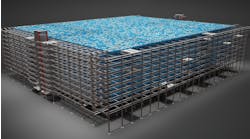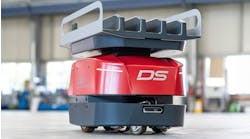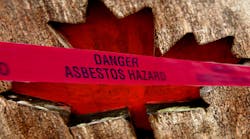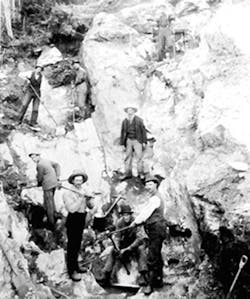There’s no running away from the past in Asbestos, Quebec.
Its most prominent landmark is a crater more than a mile wide -- and deep enough to hold the Eiffel Tower -- a testament to the world’s once-bottomless appetite for the deadly mineral that sustained the local economy for decades and gave the town its name. Quebec once produced half of the world’s asbestos and offered the highest-paying mining jobs in Canada before concern about cancer led to the fire-resistant fiber being banned in more than 50 countries, with the mine finally shutting down in 2012.
But now it turns out that the future of Asbestos may actually be in asbestos. Well, not in asbestos, per se, but in the millions of tons of discarded residue that piled up over more than a century of mining for it. The crushed rocks, known as tailings, are rich in magnesium, a mineral that can be transformed into a light metal that’s used in everything from medical implants to Tesla electric cars.
The prospects are attracting companies eager to cash in, including Quebec-based Alliance Magnesium Inc., which has been running a pilot plant and raising funds to scale up production. If Alliance’s plan works, it could ultimately add 350 jobs and strengthen an economic revival that’s starting to take hold as government loans and ready-for-use industrial lots lure an eclectic mix of companies to the once-vibrant mining town.
“We had to manage economic decline for a long time,” said Alain Roy, who’s been an Asbestos town councilman since 2005. “Now we have to manage growth.”
Key to the growth strategy is keeping magnesium production costs low enough to compete with Chinese companies that have dominated the roughly $2.5 billion market since pricing out many rivals in the early 2000s — including two in Quebec.
“The market has changed a lot; technologies have improved,’’ Joel Fournier, the scientist who started Alliance Magnesium, said in an interview at the plant. “Many users are waiting for a producer like us to provide a stable supply. They’re worried about the geopolitical risks of having China as the quasi-sole supplier.’’
Demand for magnesium, which is a third lighter than aluminium, is set to grow as carmakers rush to cut vehicles’ weight to comply with carbon-emissions standards. At Minneapolis-based Twin City Die Castings Co., which makes auto parts and components used in medical devices, the magnesium business has doubled in the past four years, said Chief Financial Officer Todd Olson.
The U.S. market is particularly enticing to Alliance, which could bypass tariffs slapped on Chinese magnesium that keep prices there as much as 60 percent higher than in Europe. It’s currently in talks with metal traders to sell parts of its future production.
For now, the company churns out only a few ingots per day, far from the 50,000 metric tons it’s vowed to produce by 2022 — about 4.5 percent of global primary production in 2017. Fournier, who is chief executive officer, is in talks to raise C$100 million ($78 million) to start building a midsize plant this year and hopes to go public to fund a larger one.
On a recent Friday morning, a chlorine smell floated through the pilot site, a telltale sign of the electrolysis process used to produce magnesium. Acid helps extract the mineral and separate it from silica. The resulting brine is filtered and dried into salt, heated and submitted to a powerful electrical current, producing metal on one side and chlorine gas on the other.
The technology, which runs on hydroelectricity, is greener than the older, coal-fired method used in China. But it still uses a lot of energy and requires extra maintenance because of acid-related corrosion. Keeping a grip on manufacturing costs is the key to success, said Jerry Cole, a Detroit-based consultant who set up Ford Motor Co.’s magnesium strategy in the 1990s.
“They have to know every dime and how every fluctuation in their engineering cost would affect the price of the finished product,’’ he said. “You’re dealing with the automotive industry — if the price is 5 cents too high, they won’t do it.’’
Fournier says circumstances have changed since lowball Chinese prices forced Norsk Hydro ASA and Noranda Inc. to close shop in the French-speaking province more than a decade ago. A power surplus has helped push down electricity prices, while China faces higher labor costs.
There are three other projects centered on the 400 million tons of mine residue around Asbestos, according to Mayor Hugues Grimard, who wants to turn his town into the “technopole of magnesium.” That includes one by British-Columbia based Mag One Products Inc., which is running its own production tests at a new, government-backed mining innovation center.
This time round, Asbestos is also mindful to diversify its economy. Its expanding industrial park is home to a duck slaughterhouse, a hemp-insulation maker and a semi-trailer manufacturer that took advantage of a C$50 million fund by the provincial government. The town even got its first Tim Hortons — Canada’s iconic coffee-and-doughnut chain.
In a former church that’s now the town hall, officials have to make unfamiliar decisions: where to invest.
“We need to make space available for people to move here; we need to offer new services,” said Roy, the town counselor.
Yet Roy says the economic buzz has yet to sink in for some of the 6,800 residents who lived through decades of asbestos decline. The population peaked near 11,000 in the 1960s — when the fiber was used to build everything from homes to pavements, according Jessica Van Horssen, a lecturer at Leeds Beckett University in the U.K. who wrote a book on the town’s history.
“It was a constant job, you didn’t have to go far and your sons would have work, your daughters would have work, and you didn’t have to worry about anything,’’ she said in a phone interview.
That helps explain an enduring attachment to an industry that’s banned as a danger to public health. Some companies complain the town’s name is bad for business, but a discussion to change it last decade was quickly dropped.
“The town of Asbestos may not exist today if not for the mine,’’ said Yan St-Hilaire. In 2014, he and a childhood friend opened a pub filled with mine paraphernalia.
At Moulin 7, patrons can sample beer brewed on site called miner, white gold or 1949 — a reference to a famous strike. Tables, chairs, lockers and even the alarm that signaled an impending blast were bought from the mine.
“For us, it brought additional pride to share our history,” he said as patrons of all ages filled the pub. “To keep the past in mind and not forget where we come from.’’
by Sandrine Rastello and Natalie Obiko Pearson











